Archive
Crime of the Millennium
By Jeff Nielson | Silver Gold Bull
As few people in our societies even know, all of the world’s governments have (foolishly) granted exclusive monopolies for the printing of all the world’s currencies (our “money”) to a cabal of privately-owned corporations called “central banks” – given that name because it is a cabal exclusively owned/operated by bankers.
Understand that the monopoly to print money is nothing less than a license for economic rape. These private banks lend us all the paper that they print out of thin air (at zero cost to themselves). The result is that after roughly 100 years of this economic rape we have (collectively) paid these banks $trillions in “interest” for nothing, and currently owe them $10’s of trillions for nothing. History’s single greatest act of legal theft.
Indeed, these bankers have stolen such unimaginably huge sums of wealth from our societies that the Thieves now voluntarily return most of the additional amounts they steal each year. There are two reasons for this act of pseudo-remorse. To begin with, with the Little People drowning in debt individually, and with our nations drowning in debts collectively; the Thieves were/are worried that their Victims might actually notice them sitting on top of their mountains of (stolen) money.
However the second reason – the real reason – is that the countless $trillions that these central banks have stolen from us are literally just the tip of the iceberg during their reign of legal-crime. This private cabal of central banks has not only been given monopolies to print money out of thin air for their own benefit, but thanks to the abominable euphemism which they call “fractional-reserve banking”; they are allowed to delegate their License to Steal to other private banks.
Specifically, for each dollar that the central bankers lend to their other banker-friends (at zero/near-zero interest rates); these private banks are allowed to print ten more dollars out of thin air, and lend them to the Little People (at higher rates of interest). Thus the central banks don’t mind returning most of the additional money which they steal each year, since their own thievery only represents 10% of the total banker-plundering of the wealth of all economies.
What is the inevitable result of a capitalist system where every new dollar that is used to fuel the economy is lent into existence? Debt Slavery: the ultimate goal of every (paper) fiat currency system.
There is now somewhere in excess of $200 trillion in debt sloshing around the global economy, most of that debt being totally fraudulent, in that it is interest paid to bankers (literally) for nothing. Somewhere around 25% of every dollar earned by all of our Western economies is now paid to these banker-parasites as interest on their fraudulent debts. The bankers would like to steal even more, but already all of our economies are teetering on the verge of bankruptcy.
Greece was already forced to default, and the U.S. (the world’s largest Deadbeat Debtor) is only able to ward-off debt-default by fraudulently maintaining its own interest rate at zero percent. Put another way, if U.S. interest rates had ever reached the same level as those which were inflicted on Greece by Wall Street’s economic terrorists; the U.S. would have defaulted even faster than Greece. It would have required the U.S. government to quadruple tax revenues just to pay the interest on its own (fraudulent) debt.
Having enslaved us all with debt thanks to being granted their License to Steal, history’s greatest thieves are also history’s greatest hypocrites. Whenever one of our (subservient) governments has the audacity to actually suggest taking a closer look at the bankers’ Theft Monopoly; the Thieves look down their noses, point their fingers at us, and accuse of us “threatening their independence.” Yes, there is no one who places a higher price on his own freedom than the Slave Master. What about our independence?
The latest example of this supreme hypocrisy comes from (surprise, surprises) Benjamin Shalom Bernanke. Feeling especially pleased with himself after his two-day love-fest with the banker sycophants of the U.S. Congress; B.S. Bernanke chose that moment to launch yet another attack at Rep. Ron Paul – and his “Audit the Fed” bill.
Bernanke’s specific accusation? As paraphrased by the Corporate Media, Bernanke whined that “the ability to review monetary policy decisions…could compromise central bank independence.” This is by no means a new argument. Indeed, it is the Big Lie which the banker-thieves have hid behind for a hundred years – since it has never had a shred of validity.
The Big Lie is based on the artificial/arbitrary distinction of all economic policies as being either “fiscal policy” (the realm of government) or “monetary policy” (the realm of private bankers). The obvious fiction here in attempting to create some invisible wall between the two groups of policy-makers is that there is only one economy.
Pretending that the fiscal policy of an economy can act “independently” of monetary policy (or vice versa) is precisely as absurd as suggesting that a car’s transmission could operate “independently” from the engine. Indeed, this metaphor is very useful since the analogy of the fiscal and monetary policy of an economy and the engine and transmission of a car is precisely parallel.
As with a car’s engine, fiscal policy “powers” any/every economy, since it represents the physical economy itself. Conversely, monetary policy is merely the throttle (or “transmission”) which regulates the speed of the economy. Obviously neither of these elements can ever possibly be fully “independent” of the other. It is equally obvious in both these pairings which must be the dominant component and which must be the subordinate component.
With every car, its transmission is clearly subordinate to its engine. It is transmissions which are designed to optimize engine performance, and not engines being designed to optimize any particular transmission. Similarly, it is monetary policy which must naturally/automatically be subordinate to fiscal policy, rather than fiscal policy being designed to cater to the whims of private bankers (i.e. the Thieves). The Tail cannot be allowed to wag the Dog.
Thus when B.S. Bernanke claims that central banks “must maintain their independence” he is not uttering some profound truth. Rather, he is merely repeating the bankers’ Big Lie, a vacuous fiction which as a matter of simple logic never could have any validity. It is a Lie with one very obvious purpose: to minimize scrutiny as a small cabal of bankers perpetrate theCrime of the Millennium.
With our nations (and most of their citizens) drowning in fraudulent debts while the bankers sit on their mountains of ill-gotten money, it literally adds insult to injury for these bankers to arrogantly maintain we (the ones who granted them their License to Steal) have no right to take a closer look at how they have been robbing us blind for the last century.
This would probably be a good time to remind the Thieves how History tends to (eventually) reward them for their deeds. Less than a week after a news item appeared out of Iran reporting that the Iranian government had executed several bankers for a multi-billion dollar act of serial fraud, an interesting article appeared (ironically) on the blog for the Wall Street Journal itself.
The writer of that article notes the following:
The Code of Hammurabi, more than 3,700 years ago, stipulated that any Mesopatamian who violated the terms of a financial contract – including the futures contracts that were commonly used in commodities trading in Babylon – “shall be put to death as a thief.”
…In medieval Catalonia, a banker who went bust wasn’t merely humiliated by town criers who declaimed his failure in public squares throughout the land; he had to live on nothing but bread and water until he paid off his depositors in full. If, after a year, he was unable to repay, he would be executed…Bankers who lied about their books could also be subject to the death penalty.
In Florence during the Renaissance, the Arte del Cambio…made the cheating of clients punishable by torture…
But financial crimes weren’t merely punished; they were stigmatized…
Contrast that with our modern societies where “punishment” for so-called white-collar crime is (at worst) nothing but a slap on the wrist in comparison to punishment handed out for blue-collar crime: the crimes of the Little People. The entire basis of this two-tier justice was the presumption (never supported with evidence) that the rich did not require as much deterrence from crime as the poor – and thus the sentences for their misdeeds did not need to be as severe.
Today, as the bankers now openly confess to a single act of fraud which they themselves estimate is roughly $350 trillion in scope, well over 90% of all crime in the world (by dollar value) is now white-collar crime. Meanwhile, we just had 25% of Wall Street executives confess that crime was a way of life in banking (and presumably the other 75% were lying).
In short, never in all of human history has white-collar crime required such maximum deterrence. I suggest to all these Thieves that they not only study their history books, but (for those based in the U.S.) that they also take a glance toward Death Row, and contemplate what “maximum deterrence” means in the 21st century U.S.A.
-
Further Reading:
Is a Strong Dollar Trouble for Gold?
By Vedran Vuk | Casey Research
You’ve probably heard that a strong dollar means weaker gold prices.
Yet anyone who has been watching the markets closely knows that “strong dollar = weak gold” isn’t exactly true.
Sometimes, when the dollar strengthens, gold will fall. Other times it will stay flat or can even rise.
So where does that uncertainty leave gold investors?
The Dollar-Gold Relationship Has Some Surprises
We really need to understand the gold-dollar relationship in precise terms, not general ones.
One thing that you can do is look at a chart of gold and the USD/EUR over the past six months, starting from the February 1 price of $1,749.50:
It clearly shows that gold has been going down as the dollar has been gaining against its primary competitor, the euro.
In fact, the percentage gain for the dollar is nearly the same as the decline in gold, just under 10%. Seems like an almost perfect inverse correlation, right?
No, not exactly. Look closer.
There are a lot bumps and anomalies along the way. Sometimes gold has a mind of its own, separate from the dollar, meaning that other factors must be driving it.
To find out more, we also calculated the correlation of returns on gold and the USD/EUR currency pair.
For a quick refresher on definitions:
- A correlation of +1 means two variables are moving perfectly together.
- 0 means no correlation between the variables.
- -1 means a perfectly inverse correlation - when one variable goes up, the other goes down.
So what’s gold’s correlation with the USD/EUR currency pair over the past six months? It is -0.471.
To make sure this wasn’t a euro-only phenomenon, we also checked the correlation of gold to the US dollar Major Currency Index, which reflects the strength of the dollar relative to the currencies of the Eurozone, Canada, Japan, the United Kingdom, Switzerland, Sweden, and Australia.
Once again, the correlation was far weaker than one might expect, at -0.531.
So what does this mean to you and your gold investments?
If you’re expecting more flights to safety boosting the dollar, then these correlations are definitely something to think about. At the same time, the correlations are not that strong.
Many gold investors falsely believe that a stronger dollar will simply run gold into the ground. Yes, a strong dollar would present challenges, but we need to also remember that we’re not talking about a correlation of -1.
Bottom line… the dollar influences gold prices, but it is not the sole determinant of its value.
Another factor for gold investors to consider is that the relationship between these variables can change over time. -0.471 is not set in stone - the correlation can get stronger or weaker from there.
In fact, over the past five years, the correlation has typically been weaker.
It’s hard to believe, but in the six-month period preceding September 21, 2010, gold hit a peak positivecorrelation to USD/EUR of +0.149. On the other end of the spectrum, gold had its most negative correlation of -0.741 in the six-month period prior to September 12, 2008. From these two points, gold has been everywhere in between.
So a strong dollar doesn’t mean the end of the world for gold.
If we enter a period of an even stronger dollar, gold investors might be concerned, but nonetheless, as the data show, gold and the UD dollar are not the perfect inverse of each other.
Even if the correlation were to become as negative as -0.741 again, a rising dollar wouldn’t necessarily crush the gold price.
Furthermore, there’s also the possibility of gold becoming less negatively correlated to the dollar. Even without the statistics, this is apparent. After all, the dollar has already strengthened, and gold is still holding up well. Has it been roaring to new heights as it did in years past? Not lately; but it hasn’t been beaten into the ground either - and there’s a lot more of the gold story yet to play out.
-
Vedran Vuk is a senior analyst at Casey Research, publishers of 10 research services read by over 175,000 independent-minded investors around the world. The August issue of BIG GOLD, due out Tuesday afternoon, outlines a new trend in gold that most analysts haven’t picked up on yet - and more importantly, an actionable solution. Now is the time to buy gold and gold stocks while prices are down.
Allocated Bullion Storage: Do You Really Own the Bullion?
By Nick Barisheff | Bullion Management Group
 Worldwide economic uncertainty has created a growing interest in precious metals as a way to preserve wealth. Today, global risks for investors include currency devaluation, sovereign debt defaults, bond market collapses and stock market losses, all underpinned by ever-increasing government debt.
Worldwide economic uncertainty has created a growing interest in precious metals as a way to preserve wealth. Today, global risks for investors include currency devaluation, sovereign debt defaults, bond market collapses and stock market losses, all underpinned by ever-increasing government debt.
For protection from impending economic Armageddon, investors are turning in increasing numbers to the traditional safe haven of precious metals. Unfortunately, many today don’t know how to purchase or store bullion, and consequently may find themselves as vulnerable to financial collapse as those who didn’t purchase any bullion at all.
This increased interest in precious metals as portfolio insurance has spawned a new generation of precious metals-based financial products, many of which are paper proxies or derivatives of bullion. There are even unregulated markets for the exchange of “digital gold.”
A clear case for transparency
In 2007, former Bank of Canada Governor David Dodge gave a speech entitled “A Clear Case for Transparency” to the Canada-UK Chamber of Commerce. “…[I]investors will have to take on more responsibility for diligent research,” he said, “so that they can better understand the nature of their investments and demand greater transparency where it is now lacking … they must do their own homework and make a concerted effort to understand what they are buying.”
Most investors do not read the fine print of the agreements they sign with respect to financial investments; they make assumptions, but do not definitively know if they own actual bullion. Some are attracted to certain bullion investments because of low premiums and low storage fees, but when was the last time Wall Street and the major banks gave the investing public a deal?
Investors who don’t do their homework may be dismayed to find that their safe haven asset has proved to be anything but. These same people perform rigorous due diligence when purchasing a home, car or boat, demanding that they have clear legal title to the asset in question. The same attention to detail must be paid when investing in bullion.
The most important concept to understand is that a financial institution CAN sell an investor’s bullion if the agreement states that it can. Banks are not raiding allocated accounts; rather, they are following the provisions of the contract, in which the bullion is not allocated despite an investor’s assumptions.
There does appear to be cause for concern regarding the transparency of bullion products. As reported by the economic news website ZeroHedge, financial services giant Morgan Stanley paid out $4.4 million in June 2007 to settle a class action lawsuit brought by clients after the firm charged them to “buy and store” precious metals, but did neither .
Similarly, a class action lawsuit filed in New York’s federal court accuses UBS Financial Services of misleading silver investors, and charging them storage fees for metals that were never purchased, let alone allocated or stored for them.
A larger problem has been brewing for several years now, that of exchange-traded funds (ETFs). These are generally viewed as a low-cost panacea that replaces almost any investment strategy, including the purchase of gold bullion, and they are giving investors a false sense of security.
False sense of security for ETF investors
ETFs started as equity index vehicles, in which brokers acting as Authorized Participants borrowed shares from institutions, hedge funds, mutual funds or their clients’ margin accounts to contribute to the Origination Basket of shares. They received ETF shares at Net Asset Value (NAV) in exchange, and sold them to investors at NAV - keeping all of the money. This is standard practice, as brokers have always been able to borrow shares from clients’ margin accounts for the purpose of shorting or for lending to other brokers.
Essentially, many ETFs hold assets that have been borrowed. Because there are no specific prohibitions to prevent the same practice from being used in precious metals ETFs, the same methodology is likely being used. Many investors are attracted by the low management fees offered by precious metals ETFs, but few understand the problems that may arise when more than one person has claim to the same asset.
ETF-based financial crisis could make 2008 look like child’s play
This ETF structure will work during normal market conditions. However, it may result in losses and disputes if the Authorized Participants, acting as market makers, become insolvent or step aside during a precipitous decline. If a bank or brokerage firm becomes an insolvent Authorized Participant, either the lender of the assets or the ETF shareholders will suffer losses. During a market crash, existing holders may be unable to sell their ETF shares. Although this possibility was considered remote when ETFs were created, the recent and recurring failures of banks and brokerage firms make these concerns far more real .
The bottom line on ETFs is that they are tracking vehicles with multiple claims/counterparty risks on their assets as well as their shares. As debt-based stress on the global financial system continues to build, the flash-crash of 2010 may well have foreshadowed an ETF-based financial crisis that will make the subprime mortgage crisis of 2008 look like child’s play.
Own bullion with clear title
When we at Bullion Management Group sit down with clients seeking to own bullion, we present them with our Precious Metals Pyramid Chart. Moving up the pyramid increases risk; moving down the pyramid increases safety. A portfolio’s foundation should consist of physical bullion owned outright. Farther up the pyramid are proxies of bullion in one form or another that are more risky and often less liquid; in other words, the opposite of a safe haven asset you can count on in times of financial stress. Bullion should always meet two criteria: It should not be someone else’s liability, and it should not be someone else’s promise of performance.

To establish a physical bullion portfolio foundation with metals that are stored on an allocated and insured basis, one that will protect against what could be called ethical mayhem in today’s financial sector, investors must, as Governor Dodge advised, make a concerted effort to understand what they are buying. While reading legal documents and prospectuses is tedious, the truth is in the fine print and investors must do their own due diligence, and beware of complex investment structures.
Demand documentation that transfers title directly to the purchaser
For a bullion product, be it a fund or actual bullion bars, to earn its place as the foundation of a portfolio, the bullion purchaser must demand documentation that legally transfers title of specific, physical bars directly to them. Do not accept IOUs, paper proxies or derivatives. It is important to read the purchase documents carefully to ensure they convey legal title. Only after the purchaser has legal title can they enter into a binding custody agreement for bullion storage on an allocated, insured basis. In that agreement, the purchaser must be able to identify all terms and rights concerning insurance and secure, allocated storage.
Proper insurance and allocated storage in a credible, guarded vault costs money, so steer clear of bullion products promising low fees. If the deal appears too good to be true, the physical bullion may not exist. What the investor may have is paper bullion that will not offer protection when it is most needed; they may simply be an unsecured creditor of the dealer. It is hardly prudent to be tempted by low storage fees that will save a fraction of a percentage point while risking an entire bullion holding. Short cuts and penny pinching are inadvisable strategies for any asset intended as an ultimate safe haven of wealth protection.
Home storage not worth the risk of invasion or physical assault
Many people think that storing their bullion at home is a good way to economize on physical bullion storage fees, but be aware that any sizable amount of home-stored bullion will not be covered by a household insurance policy.
Keeping a modest-and secret-stash of small-denomination gold or silver for barter purposes is recommended in the event that ATM machines aren’t working, or a ‘bank holiday’ is announced. This may seem like an excess of caution until you consider that, earlier this year, the Bank of Italy authorized the suspension of payments by Bank Network Investments Spa (BNI) without first advisingdepositors .
Unless absolute secrecy is maintained, home storage means putting yourself and your family at risk of a home invasion. There has been an increase of home invasions in England during Asian wedding season, when gold gifts are stored in homes, and street gangs and professional thieves are only too happy to relieve people of their precious metals .
Even in peace-loving Canada, a British Columbia man lost his life savings of $750,000 in silver bars to knife-and-gun wielding thugs who arrived at his door disguised as police officers. When he let them in, the ‘officers’ forced him to open his vault and stole the silver . For any sizable amount of bullion, home storage is clearly not worth the risk.
Many precious metals dealers do not trust banks for storage, and prefer private vault facilities. They may rethink this approach on reviewing a British case where authorities raided three private safe deposit box centres, and opened 6,717 privateboxes . The owners of the boxes were required to provide proof of the contents of their box before their possessions were returned. Most could not do so, and much of the cash involved went missing while other items are in dispute. The ensuing litigation will likely last for decades; in the meantime, those who stored bullion in their boxes have been relieved of their metal, and may only receive compensation in the amount of the value of the bullion at the time of the raid.
Another consideration is that safe deposit box contents cannot be insured, and there is no proof that anything is actually in the box. Investors who are still interested in private vaults or safe deposit box centres should perform due diligence on the financial condition of the operator and the owner of the vault, since stored assets may be at risk in the case of a private vault’s insolvency.
Storing bullion at home, in a safe deposit box or in a private vault is another form of false economy, wherein investors put their safe haven asset at risk to save a small amount in storage fees.
LBMA bullion in LBMA member vaults
Another important aspect of due diligence for a proper foundation of wealth preservation is the assurance that your bullion is in the form of Good Delivery bars, and stored in the vault of a London Bullion Market Association (LBMA) member.
The LBMA is a wholesale, over-the-counter market for trading gold and silver. Its members include the majority of the bullion banks that hold gold, plus producers, refiners, fabricators and other traders throughout the world.
The reason for insisting on LBMA bullion is that it assures the purchaser of the quality and fineness of the bars. Once gold is outside a chain of integrity such as that of the LBMA, it may need to be re-assayed before it can be sold. This prevents gold-plated Tungsten bars from entering the chain of integrity. Re-assaying is time consuming, engenders extra cost and once again defeats the purpose of a safe haven store of wealth that offers efficient liquidity.
We constantly hear stories of discount bullion, or bullion sold at no premium to the spot price. The likelihood that this is pure bullion from an ethical source is slight to none.
In case of fire, you need an extinguisher, not a picture of one
Bullion demand is clearly growing as both sovereign nations and the world’s largest financial institutions buckle under the burden of unserviceable debt, leaving helicopter-loads of new money printing and associated currency devaluation as the only way out.
Investors can protect their portfolios by purchasing physical bullion. Just as with any large asset purchase, demand documentation that confers legal title to the bullion you are purchasing, review a written custodial agreement that specifies insured, allocated storage without giving the custodian the right to deal with the bullion in any way, and insist on Good Delivery bars.
When the next financial firestorm erupts, you need real, physical bullion and not a paper proxy; just as in a fire you need a real fire extinguisher, not a picture of one.
-
Nick Barisheff is President and CEO of Bullion Management Group Inc., a bullion investment company that provides investors with a cost-effective, convenient way to purchase and store physical bullion. Widely recognized in North America as a bullion expert, Barisheff is an author, speaker and financial commentator on bullion and current market trends. He is interviewed monthly on Financial Sense Newshour, an investment radio program in USA. For more information on Bullion Management Group Inc. or BMG BullionFund, visit: www.bmginc.ca.
My Last Forecast on Silver and Gold Prices
By Jeff Nielson | SilverGold Bull
-
 It seems at the very least ironic that as I begin a new chapter in my own career as precious metals analyst for Silver Gold Bull, that simultaneously I’m writing my last chapter on one facet of that analysis. This will be my last effort at playing the increasingly irrelevant game of attempting to forecast gold and silver prices – in terms of the bankers’ paper.
It seems at the very least ironic that as I begin a new chapter in my own career as precious metals analyst for Silver Gold Bull, that simultaneously I’m writing my last chapter on one facet of that analysis. This will be my last effort at playing the increasingly irrelevant game of attempting to forecast gold and silver prices – in terms of the bankers’ paper.
Many readers will be aghast at this announcement. How can I “analyze” the gold and silver market without providing guidance on its (paper) prices? I would immediately reverse this proposition with a question of my own. How can anyone provide rational estimates for future prices of hard assets which are being priced in paper which is already effectively worthless?
Now it is the paper-peddlers who would be horrified by my stance. How dare I assert that the beloved fiat-currencies which they (and their propaganda machine) place in such high esteem are worthless? Here I have a host of arguments at my disposal, several of which I have used in the past.
There is the obvious analogy between paper currencies and the shares of a corporation. With nothing officially “backing” these paper currencies, our governments can only impute value in this paper as a claim against these sovereign entities which issue them. How much is a share worth in a bankrupt corporation? How much is a dollar worth, when it is issued by an obviously bankrupt debtor?
However we don’t need to go down that road, since it would inevitably lead to a debate between the phony, official numbers of the United State’s “national debt”, and the $200+ trillion in debts and liabilities which it would be forced to acknowledge if it had to follow the same accounting rules as all U.S. corporations are required by law to use.
There is a much simpler and more direct way to demonstrate the worthlessness of the U.S. dollar, one which is beyond any possible debate. As a tautology, anything which can be obtained in infinite quantities and produced at zero cost must be worthless. If this were not the case, then one would simply produce an infinite quantity of that item – and thenexchange it for all the goods (and services) in the entire world.
With most of our fiat currencies now being conjured into existence electronically, this is the ultimate example of an infinite quantity/zero cost item…with one exception. Since all of this funny-money is borrowed into existence, the bankers were previously able to claim that in fact this was not a “zero cost” item – because of the debt/interest attached to each currency unit.
However that argument, the only basis for claiming that the bankers’ fiat currency had any value whatsoever evaporated the day that the U.S. began its permanent era of 0% interest rates. On that day the U.S. dollar fully became a zero cost/infinite quantity item – and indisputably worthless as a basic proposition of logic.
Why do people think B.S. Bernanke attempted to peddle the myth of an “exit strategy” – i.e. an end to 0% interest rates – for nearly three years, before finally being forced to abandon that absurd pretense? Because he and the rest of the banking cabal are terrified that someone would stand up (as I have done on several occasions) and announce that “the Emperor is wearing no clothes.”
At the end of Tulipmania 400 years ago; one day a single tulip could be exchanged to buy a house. The next day that tulip was merely a flower. The tulip itself was unchanged. All that did change was that the mass delusion that tulips were items of considerable value suddenly and collectively evaporated. It is one of the reasons why every fiat currency ever created has gone to zero (or simply been removed from circulation before it hit zero). It is one of the reasons why they tend to go to zero very, very quickly – more commonly known as “hyperinflation”.
The moment we accept the logical fact that these fiat currencies are already worthless we see the absurdity of attempting to price valuable assets (like gold and silver) in paper which has no meaning. If I announce that in hyperinflation-ravaged Zimbabwe that an ounce of gold is “worth” $2.5 trillion Zimbabwe dollars, does that actually mean anything to anyone?
Sadly, we have collectively been so completely brainwashed (over the past century) that we are now almost incapable of conceiving a world which is not priced in paper. However, go back little more than a century (and for all the centuries preceding it throughout history) and we encounter a world virtually the mirror-opposite of our own.
In that world, everything was “priced” in gold and silver. The only way that mere paper could ever acquire value was as a certificate directly backed by gold or silver. The concept of a world where everything was “priced” in fiat paper which was backed by nothing (and effectively worthless) would have been a proposition much too ludicrous for any of our ancestors to consider – except during their own, brief, disastrous experiments with such paper.
As our fiat currencies begin their final descent into history’s dust-bin of failed paper, we are entering a period of transition and re-education. We must reintroduce into our minds the concept of once again pricing goods and services in terms of items of enduring value (i.e. real money).
There is no space here to explain (yet one more time) why gold and silver are “money” while our paper currencies are obviously not. Readers will have to refer to previous explanations of the definition of money. Once readers have completed this second step in their mental transition, they are ready to return to a world of real money – and rational “value”.
How many ounces of gold does a house cost? How many pairs of shoes could one purchase with an ounce of silver? When the “dimes” and “quarters” in our wallets once again contain actual silver (real money), we could once again buy a chocolate bar with a dime (as we could only a few decades ago) – and perhaps several.
This mental transition will naturally seem like a very intimidating concept to many, just as the Dutch couldn’t conceive of a world which was not “priced” in tulips – the day before Tulipmania ended. Here it’s important to make readers explicitly aware of the penalties for being one of the last to make the transition away from the bankers’ world of worthless, fraudulent paper.
If you were a Dutch resident who exchanged his/her tulips for items of real value before the day Tulipmania ended, you fully protected/insured your wealth. If you did not do so, you were completely wiped-out financially – with nothing to console you except a handful of pretty flowers.
If we exchange our dollars (or euros) for hard assets (i.e. silver and gold) now, before they inevitably suffer the same fate as the Zimbabwe dollar, we can still protect what is left of our wealth. If we attempt to exchange our paper the day after our own “Tulipmania” comes to an end we will find we are holding nothing but an inferior brand of toilet paper.
It is because the speed at which this final collapse will occur is so unpredictable that it has become a Fool’s Game attempting to guess short-term prices for silver and gold – and now even predicting longer term prices as well. Indeed, this is now so speculative that it only makes sense to do so in a “best-case scenario” for the bankers’ paper (i.e. where they are able to delay the collapse of their paper with the maximum amount of success). Obviously in their worst-case scenario the paper would be absolutely worthless, inferring infinite prices for gold, silver, and other hard assets.
Thus my worst-case scenario for the price of gold is a price of at least $5,000/oz within the next 2 – 5 years. Similarly, my prediction for the price of silver would be a minimum of $200/oz within that same 2 – 5 year time horizon. Some will accuse me of making a “prediction” so loose as to be useless. I make no apologies.
Read more: My Last Forecast on Silver and Gold Prices
Related Articles:
-




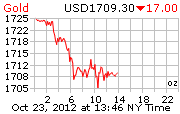
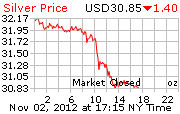
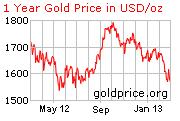
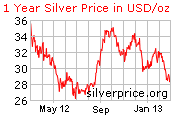
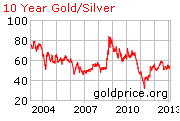
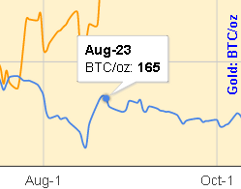
Fractional Reserve Banking, Government, and Moral Hazard
By Ron Paul | Texas Straight Talk
Last week my subcommittee held a hearing on fractional reserve banking and the moral hazard created by government (taxpayer) insured deposits. Fractional reserve banking is the practice by which banks accept deposits but only keep a fraction of those deposits on hand at any time. In practice, nearly 100% of deposits are loaned out, yet depositors believe that they can withdraw the full amount of their deposit at any time. Loaned funds are then redeposited and reloaned up to the limit of the bank’s reserve requirements, compounding the effect.
As Murray Rothbard put it, “Fractional reserve banks … create money out of thin air. Essentially they do it in the same way as counterfeiters. Counterfeiters, too, create money out of thin air by printing something masquerading as money or as a warehouse receipt for money. In this way, they fraudulently extract resources from the public, from the people who have genuinely earned their money. In the same way, fractional reserve banks counterfeit warehouse receipts for money, which then circulate as equivalent to money among the public. There is one exception to the equivalence: The law fails to treat the receipts as counterfeit.” *
-
While mainstream economists extol this “money multiplier” as a nearly miraculous process that results in a robust economy, low reserve requirements actually enable banks to create trillions of dollars of credit out of thin air, a process that distorts the structure of production and gives rise to the business cycle. Once the boom phase of the business cycle has run its course and the bust commences, some people will naturally look to hold cash. So they withdraw money from their bank accounts in order to hold physical currency. But bank deposits consist of a huge amount of credit pyramided on top of a small of amount of original cash deposits. Each dollar of cash that is withdrawn unwinds the multiplier, resulting in a contraction in credit. And if depositors en masse attempt to withdraw more funds than are available in reserves, the entire of house of cards comes crashing down. This is the very real threat facing some European banks today.
Since the amount of deposits always exceeds the amount of reserves, it is obvious that fractional reserve banks cannot possibly pay all of their depositors on demand as they promise – thus making these banks functionally insolvent. While the likelihood of all depositors pulling their money out at once is relatively rare, bank runs periodically do occur. The only reason banks are able to survive such occurrences is because of the government subsidy known as deposit insurance, which was intended to backstop the stability of the banking system and prevent bank runs. While deposit insurance arguably has succeeded in reducing the number and severity of bank runs, deposit insurance is still an explicit bailout guarantee. It thereby creates a moral hazard by encouraging bank deposits into fundamentally unsound financial institutions and contributes to instability in the financial system.
The solution to the problem of financial instability is to establish a truly free-market banking system. Banks should no longer have a government backstop of any sort in the event of failure. Banks, like every other business, should have to face the spectre of market regulation. Those banks which engage in sound business practices, keep adequate reserves on hand, and gain the confidence of their customers will survive, while others fall by the wayside.
Banking, like any other financial activity, is not without risk – and the government should not continue its vain and futile pursuit of trying to eliminate risk. Get government out of the way and allow the market to function. This will result in a more stable system that meets the needs of consumers, borrowers, and investors.
* Murray N. Rothbard, The Mystery of Banking, 2nd ed. (Auburn, Alabama: Ludwig von Mises Institute, 2008), p. 98.
-
Congressman Ron Paul of Texas enjoys a national reputation as the premier advocate for liberty in politics today. Dr. Paul is the leading spokesman in Washington for limited constitutional government, low taxes, free markets, and a return to sound monetary policies based on commodity-backed currency. He is known among both his colleagues in Congress and his constituents for his consistent voting record in the House of Representatives: Dr. Paul never votes for legislation unless the proposed measure is expressly authorized by the Constitution. In the words of former Treasury Secretary William Simon, Dr. Paul is the “one exception to the Gang of 535″ on Capitol Hill.
-
For further reading:
Share this:
Like this: